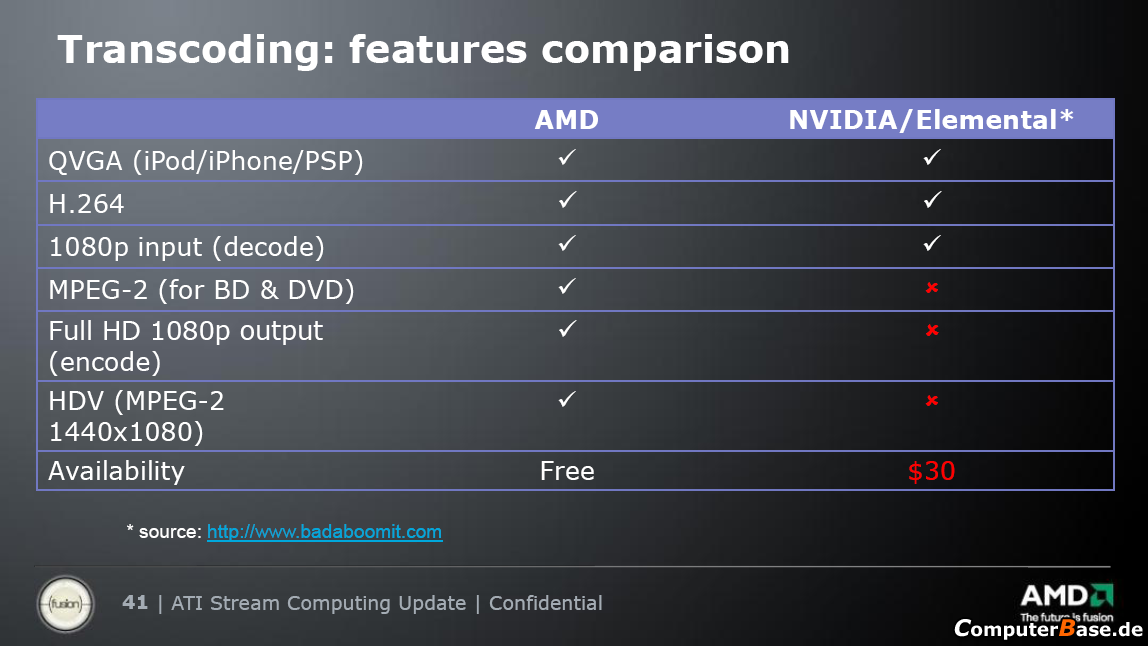Dave Baumann said:Later found out? It was indicated as such at launch:
http://www.beyond3d.com/content/reviews/25/
That is enlightening for sure. But the guys who wrote this article for example, surely could use some information much early in time (published like 10 weeks earlier) to avoid being look that stupid. Right?
Secret Video Encoding Tool „ATI Avivo Xcode“ revealed
27. November 2005
Encoding movies five times faster
Von By Arnt Kugler
Avivo XCode: Top-secret power tool for ATI’s Radeon X1000 GPUs
CHIP Online had the opportunity to test a beta version of ATI’s still secret „Avivo XCode“ encoding tool. It uses the power of the GPU to reduce video encoding time –into virtually any format – drastically. Our results show: The new ATI solution easily does it 5 times faster than even the fastest CPUs available today!
...


